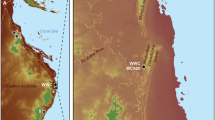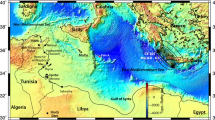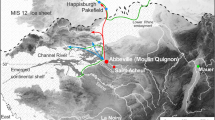Abstract
THE occurrence on rocky coasts of what Shelley1 aptly calls “fitting boulders” is, as he says, not mentioned in standard works on shore processes; but the late Professor J. A. Bartrum discussed such boulders with me in 1934 and used the term “fretting” in relation to the development of common interfaces between adjacent boulders. Baker2 described an example near Cape Paterson in Victoria (Australia) using the term “imprisoned rocks”, and indeed they are not uncommon on the Victorian coast. I have observed them at Beaumaris among blocks of soft red Tertiary sandstone derived from collapses of the cliff face, also at Sorrento in Pleistocene calcareous aeolianite, and again around Lorne and Cape Paterson where the rocks are Mesozoic arkoses. They occur also at St David's (South Wales). Shelley's descriptions afford a basis for comparison.
This is a preview of subscription content, access via your institution
Access options
Subscribe to this journal
Receive 51 print issues and online access
$199.00 per year
only $3.90 per issue
Buy this article
- Purchase on Springer Link
- Instant access to full article PDF
Prices may be subject to local taxes which are calculated during checkout
Similar content being viewed by others
References
Shelley, D., Nature, 220, 1020 (1968).
Baker, A. A., Vic. Naturalist, 76, 206 (1959).
Hills, E. S., Zeitschr. f. Geomorph. (in the press).
Author information
Authors and Affiliations
Rights and permissions
About this article
Cite this article
HILLS, E. Fitting, Fretting and Imprisoned Boulders. Nature 226, 345–347 (1970). https://doi.org/10.1038/226345b0
Received:
Revised:
Issue Date:
DOI: https://doi.org/10.1038/226345b0
This article is cited by
-
Fitting Boulders
Nature (1970)
Comments
By submitting a comment you agree to abide by our Terms and Community Guidelines. If you find something abusive or that does not comply with our terms or guidelines please flag it as inappropriate.



